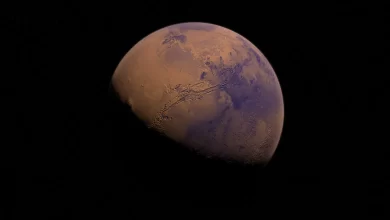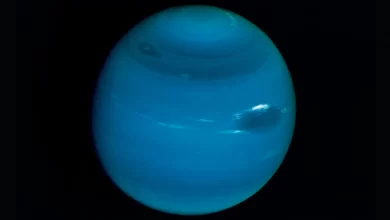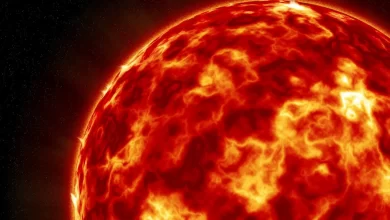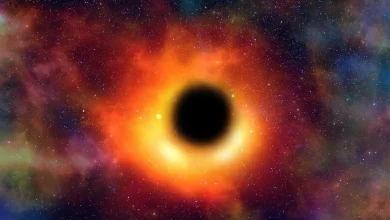The term “universe” refers to an unimaginably vast space that is unbounded by its dots of bodies. By definition, the universe includes everything that abounds in space, and space is filled with matter ranging from the tiniest and cosmic particle to the most massive galaxies. The universe is known to be made up of many different types of comparatively small and large dense Bodies, such as galaxies, constellations (star groups), stars, planets, and other heavenly bodies. From grand galaxies to cosmic dust filling infinite space, the totality of heavenly bodies describes the universe whose dimension is beyond our imagination.
- A piece of A4 paper sheet folded 103 times is as thick as the size of the observable Universe: 93 billion light-years.
- There are ten times as many stars in the known universe as there are grains of sand in the world. Astronomers say that there are 70 thousand million million million stars visible from the Earth through telescopes.
- Every electron in the universe is identical to any other electron.
- When the big bang happened, it was less noisy than a Motörhead concert. It was less than 120 decibels loud.
- Astrophysicist Sir Fred Hoyle coined the term “Big Bang.” But he never believed it as the origin of the universe.
- The fastest spinning objects in the universe are neutron stars; these can rotate 707 times in just 1 second. It also shoots out powerful gamma rays into the universe.
- One of the largest structures found in the universe is the Sloan Great Wall; it is a supercluster of galaxies 1.37 billion light-years wide and is approximately one billion light-years away from Earth.
- A typical galaxy may contain anywhere between about ten million and one trillion stars. Galaxies are of three main types: ellipticals, spirals, and irregulars.
- Dark matter makes up roughly 85 percent of the matter in the universe. All the visible matter like planets, stars, nebulae, and galaxies makes up only 15 percent of all matter in the universe.
- There are thought to be more than 2 trillion galaxies in the observable universe; each one can contain up to a few hundred billion stars. The word galaxy comes from the Greek term for our own galaxy, which means milky circle.
- The universe is so vast in relation to the matter it contains that it can be compared in the following way: A building 20 miles long, 20 miles wide, and 20 miles high that contains 1 grain of sand.
- Only 4% of the universe is what we can actually see, stars, galaxies, planets, nebulae, etc. the rest is dark. Around 22% is made up of dark matter, and the rest, 74%, is made up of dark energy.
- The diameter of the observable universe is about 93.016 billion light years. This is approximately 500,000,000,000,000,000,000,000 miles (500 sextillion miles).
- The universe’s largest known galaxies are giant elliptical galaxies, which may be as much as two million light-years long. Elliptical galaxies may also be small, in which case they are dubbed dwarf elliptical galaxies.
- The cosmic microwave background radiation is the echo of the Big Bang and the oldest known radiation in the universe.
- Hubble’s law showed that the universe is getting bigger and so must have started very small. This led to the idea of the Big Bang.
- A gamma-ray burst, if directly pointed at Earth, could cause major damage from up to 10,000 light-years away. So far, the closest encounter of gamma-ray burst on record was GRB 031203 and was 1.3 billion light-years away. Gamma-ray bursts are thought to be the most powerful blasts in the universe.
- Astronomers believe that the universe contains one atom for every 88 gallons of space.
- The scientist has researched that the whole universe can be 250 times larger than the observable universe, so it could be 7 trillion light-years across.
- According to some physicists, there could be multiple universes, so we might be living in a multiverse.
- The universe was once thought to be everything that could ever exist, but recent theories about inflation (e.g., Big Bang) suggest our universe may be just one of countless bubbles of space-time.
- A “light year” is a measure of distance, not time. It is defined as the distance light travels in one year. Light moves at a velocity of about 300,000 kilometers each second, so in one year, it travels about 9,500,000,000,000 kilometers.
- White dwarfs are among the oldest objects in the known universe since they are the endpoint of life of the life cycles of most stars.
- 90 to 99% of all normal matter in the universe is hydrogen.
- The first stars in the universe formed about 100 million years after the Big Bang.
- Dark matter is a mysterious energy that contains most of the universe’s mass. This concept was used for the first time by Fritz Zwicky in 1933.
- GN-z11 is currently the oldest and one of the most distant known galaxy in the observable universe. It is 31.96 billion light-years away from Earth.
- There are three possible outcomes for the universe:-
(i) open universe, in which expansion will never stop.
(ii) closed universe, in which the expansion will stop and turn into contraction.
(iii) flat universe, in which the expansion will slow to a halt in an infinite amount of time. - The Local Group is the galaxy group that includes our Milky Way and is under the radius of 5 million light-years.
- Most galaxies in the universe live in clusters. The Coma Cluster has over 1000 galaxies.
- Scientists estimate that the shape of the universe looks a lot like a brain cell.
- The three most common elements in the universe are hydrogen, helium, and oxygen.
- A neutron star is the strongest magnet in the universe.
- The largest known reservoir of rare metals in the universe lies in the Perseus Galaxy Cluster.
- The universe may have neither a center nor an edge because, according to Einstein’s theory of relativity, gravity bends all of space-time around into an endless curve.
- Our very own universe is about 13.8 billion years old. The leading explanation about how the universe began is Big Bang. At its simplest, the universe began with a small singularity and then expanded over the next 13.8 billion years to become the cosmos that we know today.
- Astronomers and physicists estimate there are about 100 thousand million stars in the Milky Way alone.
- Hydrogen(H) is the most common atom in the universe.
- According to calculations, the universe is expanding at a rate of 74 kilometers per second per megaparsec.
- The future of the universe may depend on how much dark matter there is. If it is too much, its gravity will eventually stop the universe’s expansion and make it shrink again.
- According to the Astronomers, the Boomerang Nebula is the coldest place in the universe at one degree Kelvin (minus 458 degrees Fahrenheit). It’s even colder than background space and is 5000 light-years away.
- Almost every galaxy in the universe has a black hole in the center. Even there is one massive black hole in the heart of our own Milky Way galaxy.
- Helium is the only substance in the universe that cannot be in solid form. It can’t be cold enough. It is the most abundant element in the universe after hydrogen.
- The least massive stars in the universe, red dwarfs, may have lifespans of a trillion years.
- Till the 1700s, the universe was thought to be 6,000 years old. It is now thought to be about 13,700,000,000 years old.
- About 60% of all known galaxies are elliptical. Elliptical galaxies are generally smaller than spirals and barred spirals and have no spiral arms. Elliptical galaxies are virtually devoid of nebulae and interstellar material and consequently contain mostly old stars.
- The hottest place in-universe is five million light-years away in the constellation of Virgo. A cloud of searing gas is surrounding a swarm of galaxies clustered together is the hottest place, with temperatures reaching an amazing 300 million degrees Celsius. The cluster of galaxies is labeled as RXJ1347.
- The biggest known galaxy is IC 1101, which is 50 times the Milky Way’s size and about 2,000 times more massive. It is about 5.5 million light-years across. Nebulas, or vast clouds of gas, also have impressively large sizes.
References
- Sciencealert.com(Piece of paper folded 103 times)
- Telegraph.co.uk(Ten times more stars in the universe than there are grains on earth)
- Homeworklib.com(Electron are identical to each other)
- makeameme.org(When big bang happened it was less noisy than a motorhead concert)
- Livescience.com(big bang got its name from Astrophysicist Sir Fred Hoyle)
- Physicsoftheuniverse.com(fastest spinning objects in the Universe the neutron star)
- Astronomy.com(largest structure found in the universe the Sloan Great Wall)
- Wikipedia-Universe
- Space.com(diameter of the observable universe)
- National Geographic-Universe
- Space.com(microwave background radiation is the echo of the Big Bang)
- Pnas.org(Hubble’s law)
- Wikipedia-Gamma ray burst
- Nytimes.com(one atom for every 88 gallons of space)
- Space.com(there could be multiple universe)
- Livescience.com(universe may be just one of countless bubbles of space time)
- Wikipedia-Light year(Light travels in one year)
- Wikipedia-White Dwarf
- Physics.uu.se
- Wikipedia-GN-z11
- Wikipedia-Galaxy Clusters
- Independent.co.uk
- Study.com
- Wikipedia-Universe
- phys.org
- Theconversation.com
- Space.com
- Le.ac.uk
- History.aip.org
- Skymania.com






